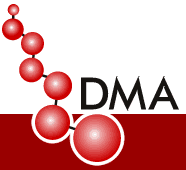The DMA Solution Set has been applied in a number of organizations to solve many different problems.
1. Organization Design
One international company had been concerned that the layer
of management below the Board was not adding value.
Over a period of 11 years that layer had been
inserted, removed, replaced and was about to be removed once
again.
The strategy was to double the business in the
period of the long term plan.
DMAC conducted a number of interviews to plot the relevant spines of accountability across the business.
IIt established that layer was adding value but there were a number of faulty design issues elsewhere which was causing the “noise” and concern.
The company was saved from making a wrong decision.
2. Cost Effectiveness
One of the consequences of getting the organization design correct is the amount of savings this generates, as non-value adding jobs are removed.
One international client saved $20million in its Head Office by applying the DMA Solution Set over a couple of years.
Another international company made the same level of savings in the Operations side of its business.
The DMA approach focuses upon “fat not muscle” which is why it is so successful in eliminating waste and non-motivating jobs.
3. Management Assessment
One organization has been able to use the DMA accountability levels to more accurately assess and benchmark their management against a sample of world class general managers.
This has led to heightened performance and better assessment of potential.
4. Assessing Board Potential
One organization wished to critique is list of potential
board members.
The list originally had around 10 contenders.
Following accountability Probes to establish the level of accountability of the Board, the DMAC Competencies were applied to the key individuals.
The result indicated that not all the candidates had the required potential and the company avoided promoting the wrong individuals.
5. Leadership Development
More than one organization has been able to use the DMA platform of accountabilities to identify up to 10 critical “boundary moves” for their top managers.
This has ensured that in tracking their progress the organization has learned how to effectively take key individuals outside their comfort zone without leaving their learning zone.
This has helped avoid the stress stemming that can come from being put in a job that was either not ‘big enough’ or ‘too big’ for the individual concerned.
6. Career Planning and Mobility
A multi sector international business wished to improve the mobility of its managers across the Group and between the businesses. But there was no platform in place to facilitate this process.
DMA was able to establish a common set of accountable levels, which together with DMAC Competencies, provided that platform. This in turn helped identify the right jobs and candidates for real promotions that improved the individuals’ personal development and put key players in the critical top jobs.
7. Reward Management
A number of companies have implemented DMA levels as the basis for broadbanding pay and benefits.
By broadbanding accountability rather than money they have laid the basis for effective remuneration policy and practice.
They have overcome “grade obsession”, administrative promotions and arrested grade and the associated cost drift.
8. More effective meetings & authority limits
a) Operational meetings
Once management realise that only the manager from the next layer is needed to run meetings where a decision is required, meetings become more effective.
The DMA Solution Set also helps identify which other colleagues should attend, i.e. those at a comparable level if it is decision making forum.
This can vary for communications or training forums. But the DMA logic helps clarify the purpose of the meeting, who should be there and why. And, perhaps more importantly, who does not need to be there.
Once the superfluous layers are removed the authorisation
procedures and spending limits can become more realistic
and effective.
b) Strategic meetings
A major international organization used the DMA Elements to critique the items on the Board Agenda.
The items were broken down into operational and strategic in line with the DMA definitions.
Although this was a strategic forum it emerged that almost two thirds of the items being dealt with were operational in nature and had a time line of less than 9 months. This meant the strategic team was crowding lower levels of management.
The subsequent change in focus has helped all levels of management become more effective.
9. Business issues
On more than one occasion DMA principles have helped management
sort out a major business problem.
These have varied from identifying faulty selection
techniques,
lack of appropriate guidelines and work demarcation
(e.g. in level 1), ineffective assessment mixing value, skills
and competencies, and sub-optimal organization structures.
One of the most frequent mistakes of top management is to “throw another layer of management” at the problems to sort it out. This tends to exacerbate the existing problems.
The laser of DMA accountability quickly highlights this mistake.
10. Coaching and Mentoring
Finally the DMA Solution Set provides a sound basis for coaching and mentoring.
This has been found to be critical for managers crossing
from:
a) Operational to Strategic levels, i.e. crossing the Rubicon
from level 3 to level 4.
b) Managers crossing into General Management levels, especially
from level 4 to level 5.
Companies that do not have the DMA approach are invariably not clear where these critical accountability levels reside in their organization and promote the wrong people, or the right people with inadequate preparation, which lessens their chances of success.
DMA is able to identify the key development questions and issues that managers need to address in the areas of coaching and mentoring.
